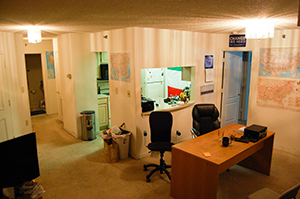
University President Steven Knapp defended the new on-campus housing mandate for juniors as a way to build campus community, shooting down the idea that the move is financially motivated.
The University announced Monday that it would force juniors to live on campus, starting with the Class of 2018 – a move GW officials projected in 2011 would bring in $2.3 million in revenue for the University’s academic programming. A University spokeswoman confirmed that figure Wednesday.
“To be honest with you, I haven’t been focused on that [financial] aspect of it,” Knapp said in an interview Tuesday. “I’ve been focused on the idea that it’s going to strengthen the institution for us to become an increasingly residential university.”
The move struck a negative chord with students because of residence halls’ higher price tags compared to off-campus apartments. A pair of Student Association senators protested the decision, which they said kept students out of the loop and unfairly dug into their pockets. About 40 percent of students choose to live off campus after their sophomore year.
Juniors pay between $12,650 and $13,800 to live in residence halls like Ivory Tower, 1959 E Street or Amsterdam Hall for the nine-month academic year. But they can find rents for $5,000 less over the same period at area apartments like Winston House, the Statesman and Claridge House.

Knapp said those complexes still could not duplicate on-campus student life experiences for students.
“The more we can have our students together for a longer period of time, the stronger that community will be,” he said. “To me, the feel of living on M and 24th streets is a totally different feel than living in the F Street house and being right in the middle of campus.”
Knapp added that he’s heard from parents during move-in days that they would prefer more on-campus housing options for students.
Construction has already begun for GW’s $130-million “superdorm,” which will add 300 beds to campus even after the University ends its lease with the upperclassman City Hall residence hall in 2016.
That 900-bed residence hall will combine The Schenley, The West End and Crawford Hall and expand affinity programs when it opens in 2016.
The University has poured more money into improving student life in recent years, which can help boost graduation rates and build a stronger alumni donor base down the road.
In the Monday news release, GW’s director of community relations Britany Waddell said the move would also “minimize impacts of students living in the surrounding neighborhoods.” Foggy Bottom residents have called out GW for letting students run roughshod over the neighborhood, sometimes straining the relationship.
The mandate will be the only Innovation Task Force idea put into place that adds costs for students.
The Innovation Task Force is a group of faculty, staff and students that proposes and plans cost-saving and revenue-producing ideas every six months to fuel academic and research programming. Other ideas typically include new academic graduate programs that raise tuition revenue, or workplace efficiency measures like expanded unpaid leave.
– Brianna Gurciullo contributed to this report.




